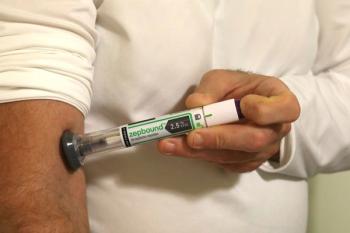
APSS: A Dead Body Climbed on Top of Me: Details on Sleep Paralysis
MINNEAPOLIS -- Sleep paralysis is common among Mexican adolescents, researchers reported here.
MINNEAPOLIS, June 18 -- Sleep paralysis is common among Mexican adolescents, researchers reported here.
One in four (26.4%) of those interviewed claimed to have experienced the phenomenon, Alejandro Jimenez-Genchi, M.D., of the Instituto Nacional de Psiquiatria Ramon de la Fuente, in Mexico City, told attendees at the Associated Professional Sleep Societies meeting.
An earlier study found that the phenomenon affected only about 11% of the population, but Dr. Jimenez-Genchi believes that's because of the terminology used by the researchers.
"They used a clinical description to investigate sleep paralysis," he said. "Mexicans use the expression 'a dead body climbed on top of me.'"
Because the phenomenon is most often seen in childhood or adolescence, Dr. Jimenez-Genchi and colleagues interviewed 230 students from three high schools in Mexico City. "We were surprised to find that most students (90%) had at least heard of the phenomenon," he said.
The characteristics of the "a dead body climbed on top of me" experience "suggest that it is identical to sleep paralysis," Dr. Jimenez-Genchi said.
He noted that not all people experience the phenomenon in the same way. In the vast majority of the cases, the students said they can't move (85.5%); there was an inability to speak in 72.6% of the events; chest oppression was felt 43.5% of the time; and there was a sense of a presence in 46.8% of cases.
Hallucinations were also common: visual hallucinations were reported in 29% of the events, audible hallucinations in 24.2%, and tactile hallucinations in 12.9%.
Dr. Jimenez-Genchi noted that the sensation was reported as lasting from a few seconds to a minute or so.
The students reported the following frequency of episodes:
- Once in their lifetime in 34.9% of the cases
- 2-3 times in 33.3% of the cases
- More than three times in 6.3% of the cases
- Once a year in 3.2% of cases
- Several times a year in 12.7% of cases
- Once a month in 6.3% of cases
- Several times a week in 3.2% of cases
All the teenagers who participated in the survey also completed a Sleep Paralysis Questionnaire and the Epworth Sleepiness Scale. There was no difference in scores between those who had had a recent event and others who had not had an event recently, Dr. Jimenez-Genchi said.
"These parasomnias are fascinating things to study," said Colleen Walsh, B.S., a post-graduate researcher at the University of Pittsburgh, who also reported on parasomnia events -- nightmares, sleep terrors, sleep walking and sleep talking, and enuresis. "I have friends who describe similar sleep paralysis events."
In her study, parasomnia events in childhood tended to be related to insomnia and other disturbed sleep conditions in adulthood.
Insomnia patients more frequently reported childhood parasomnias (72.1%) than did healthy subjects (48.8%) (Chi2=7.27, df=1, P
Newsletter
Enhance your clinical practice with the Patient Care newsletter, offering the latest evidence-based guidelines, diagnostic insights, and treatment strategies for primary care physicians.


















































































































































































































































































